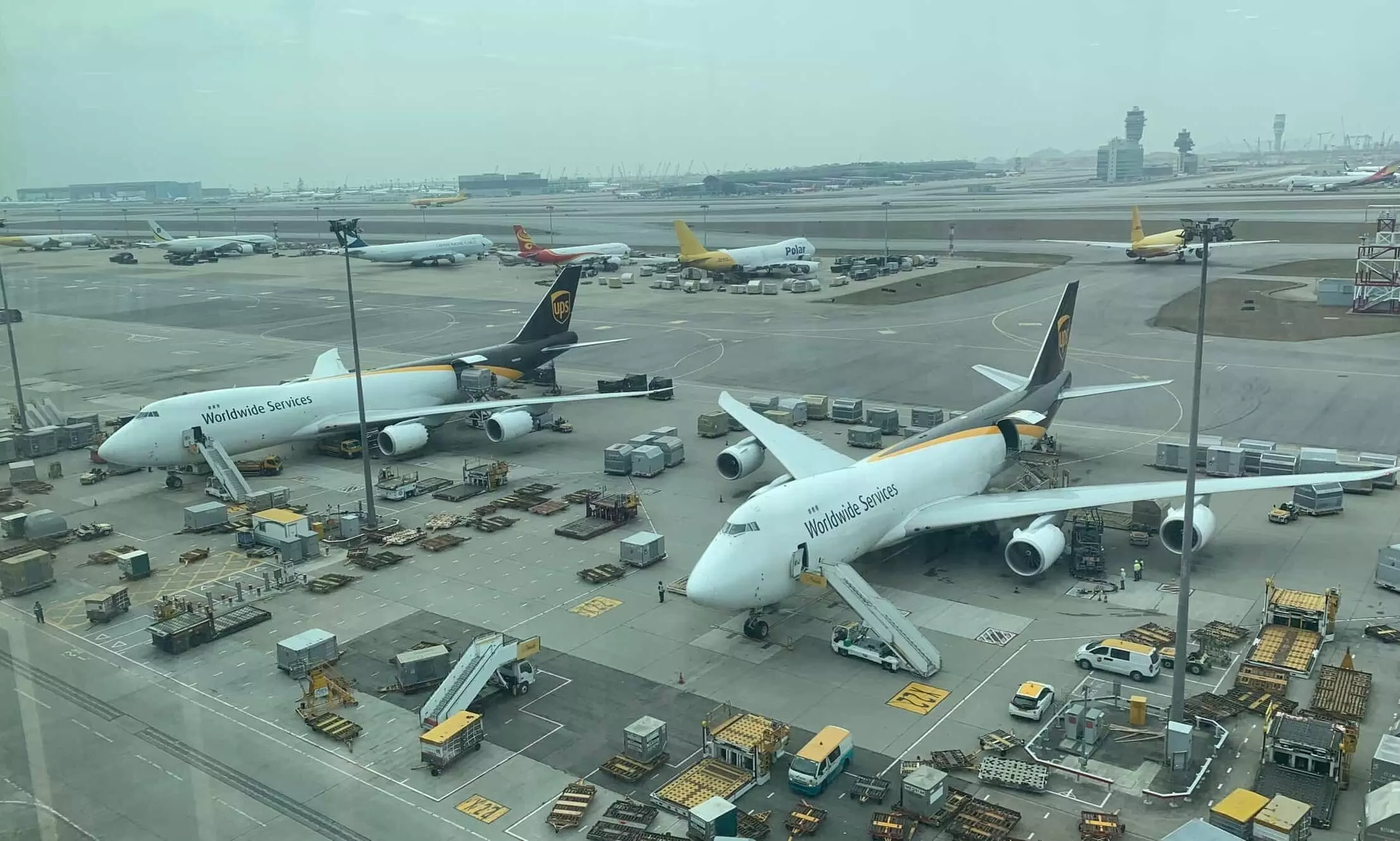
Widebody freighters booked through Q4: Dimerco
Airlines responding by splitting Block Space Agreements (BSAs) into smaller segments, particularly on China-U.S. route

Hong Kong International Airport
The airfreight commodity mix has evolved significantly due to several factors - shifts from ocean freight to air freight, driven by global port congestion, crises like the Red Sea incident and a narrowing rate gap between air and ocean freight.
"Additionally, the launch of new e-commerce platforms and consumer electronics products has spurred demand for airfreight," says the latest update from Dimerco.
"This increased demand has led to a shortage of widebody freighters, which are now fully booked through the end of Q4. Airlines have responded by splitting their Block Space Agreements (BSAs) into smaller segments, particularly on the China to U.S. route with signing ratios reaching their highest levels since the pandemic."
Kathy Liu, Vice President, Global Sales & Marketing, Dimerco Express Group says: "Given the current airfreight market dynamics, it is advisable to plan Q4 capacity early, especially for routes from China to the U.S. and EU. Securing space in advance is crucial to meet forecasted demand and ensure smooth operations. Widebody freighter charters with optimal routes and aircraft conditions are already sold out. Therefore, partnering with a reliable logistics service provider for long-term support is the best strategy. Shopping around at this stage could lead to uncontrollable service issues and unpredictable risks."
Global economic growth resilient
Global economic growth in June slowed but still marked the second strongest month over the past year, the update said, quoting S&P Global Market Intelligence. "The Global PMI Composite Output Index decreased to 52.9 in June from 53.7 in May. Despite the slowdown, global economic growth remains supported by modest expansions in both the manufacturing and service sectors. Inflationary pressures are easing somewhat as price increases in the goods-producing sector are offset by slower expansions in the service sector."
e-commerce demand, inventory management
e-commerce demand from China remains robust, driven by the possibility of tariff adjustments following the U.S. elections. To preempt any potential tariff changes, shippers are expected to expedite inventory transfers from China to the U.S. before the end of the year, the update added.
Country/Region reports
Taiwan: Space remains tight from Taipei to the U.S. but is improving compared to last month. Rates are dependent on space availability with larger shipments quoted on a case-by-case basis. Urgent shipments will incur express rates to secure space. Air cargo tonnage decreased by 7.7 percent in June.
East China: Rates and space were stable during the first half of July for the U.S. lane but began to rise starting in the third week of the month. This increase is attributed to a damaged flight by Air China Cargo and a global IT outage affecting logistics.
Rates and space remain stable due to the summer holidays in the EU, which have not significantly impacted the market.
Rates and space are stable in the SE Asia lane with the exception of Penang, where space is notably tight.
North China: From Beijing to the U.S., rates have increased and space is tight, primarily due to high demand for e-commerce products. In contrast, rates from Tianjin have seen a slight decrease compared to the previous month.
While rates have increased and space remains tight on the Europe lane, both rates and space are stable on the SE Asia lane.
South China: Rates were stable during the first half of July on the U.S. lane but have slightly decreased starting in the second half of the month.
Rates have decreased due to the summer holidays in the EU.
Rates on the SE Asia lane have slightly decreased compared to the previous month.
South Korea: Air export volumes to Southeast Asia have remained steady compared to the previous month with no reported space issues with airlines.
Air export space to the U.S. has become even tighter since last month. This is attributed to the current ocean market situation where high freight rates are driven by a shortage of supply and strong demand for China’s outbound cargo, particularly in e-commerce and e-cigarettes.
Securing airline bookings has become increasingly challenging with general rates, and space reservations should now be made at least two weeks in advance with updated rates required for each shipment.
Malaysia: Air freight from Penang to long-haul destinations is experiencing backlogs at connecting airports. For Kuala Lumpur, shippers are preparing for the 11.11 and Black Friday sales in the U.S. The restocking before the holidays may explain the increased demand. It is recommended to avoid any last minute bookings and plan a buffer for your shipments.
Vietnam: Until the end of the month, all available space for freight from Vietnam to the U.S., Canada and Europe lanes is fully booked. Space is becoming increasingly limited, and rates are rising gradually each week. It is expected that rates will continue to increase through the end of Q3. Booking 2−3 weeks in advance is advised. Airlines will adjust costs based on requested delivery times at the time of booking. Shipments requiring expedited clearance will incur an express rate.
India/Australia: For air shipments from India to the U.S./Canada, space constraints in ocean freight have led to the transfer of some time-sensitive cargo from ocean to air.
Space is tight for cargo from Chennai and Bengaluru on the U.S./Canada lane with rates rising. On the Europe lane, capacity from Chennai and Bengaluru is seeing an upturn while rates continue to be stable. Both capacity and rate is stable on intra-Asia lanes from Chennai/Bengaluru.
U.S.: Air freight supply has increased by three percent year over year but shippers are facing higher costs due to limited capacity. This capacity constraint is primarily driven by the extraordinary growth in e-commerce exports from China to the U.S. and Europe.

